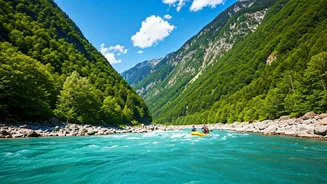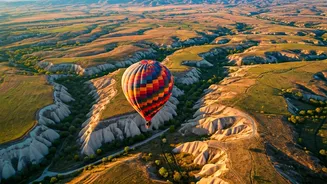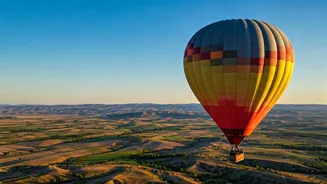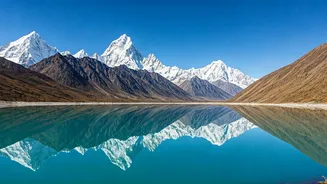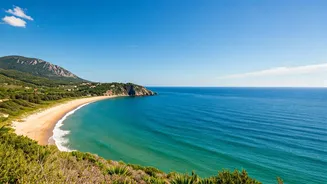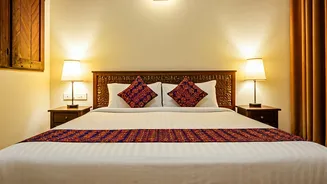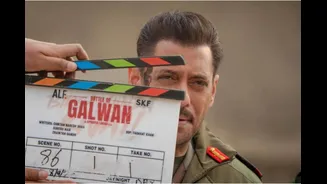Ever wondered what it's like to walk on a frozen river? The Chadar Trek in Ladakh lets you experience that. It is surely a once-in-a-lifetime adventure
across the frozen Zanskar River. Though this trek really checks your endurance against the temperatures. Each step on the icy sheet, or as it is known as "chadar", brings new sights. Before setting off, it's really essential to keep in mind a few things – from when to go to what to pack, and many more things.
Where and When to Go
The Chadar Trek takes place on the Zanskar River in Ladakh, which freezes completely in winter, forming a thick “chadar” or sheet of ice. The trek typically runs from early January to mid-February, when temperatures range from –10°C to –30°C and the ice remains stable enough to walk on. By late February, as the sun grows stronger, the river starts thawing, making it unsafe.
Most treks start from Chilling village, which is a 9- to 10-hour drive from Leh, and continue along the frozen river to Nerak, covering roughly 60 to 70 km over 6–9 days. The dramatic ice formations, frozen waterfalls, and the stillness of the mountains make this trek unforgettable but also demanding.
Difficulty level of Chadar Trek
This trek is not for the faint-hearted, as it is considered one of the most difficult and challenging treks in India. Trekkers who want to experience the Zanskar trek should be prepared for unsettling temperatures and harsh conditions even during camping. At times, you will also be required to climb icy rocks. Each individual should be mentally and physically prepared for the challenges during the full trek.
Permits and Rules
Make sure when you're planning your trek, you get several permits:
- LAHDC (Leh Autonomous Hill Development Council) permit
- Wildlife Department permit (as the trek passes through protected areas)
- Medical fitness certificate issued at Leh
- Environmental fee receipt
Before starting your trek, you’ll need to get a medical check-up at the Sonam Norboo Memorial Hospital in Leh to ensure you can handle the altitude and cold.
Staying Safe on the Ice
The frozen river changes constantly. Sometimes the ice cracks, forcing trekkers to climb over rocks or wade through freezing water. Always listen to your guide’s instructions, and remember to keep an eye out for thin ice patches. The safest time to walk, as the ice is firmer, is in the morning. By afternoon, parts of the surface can turn slushy. Waterproof boots and gaiters are a must to keep your feet dry.
Avoid walking too close to the river’s edge, and never trek without local guides who know the terrain well.
General Itinerary for Chadar Trek
Many trekking operators follow a 9-day itinerary:
Day 1: Arrive in Leh
Day 2: Acclimation and exploring Leh
Day 3: Medical check-up and permit requirements
Day 4: Drive to Shingra Koma and Trek to Tsomo Paldar
Day 5: Trek to Tibb Cave
Day 6: Trek to Nerak Village
Day 7: Return back to Tibb Cave
Day 8: Trek back to Shingra Yokma
Day 9: Departure
Essential Gear and Packing Tips
Packing smart is the difference between comfort and misery. Here’s what’s essential:
Footwear: Waterproof trekking boots with thick soles and good ankle support.
Clothing: Thermal layers, fleece, a down jacket, and a windproof outer layer.
Accessories: Woollen caps, neck gaiters, sunglasses, and waterproof gloves.
Sleeping Gear: A sleeping bag rated for extreme cold and an insulated mat.
Extras: Trekking poles, a headlamp, power banks, energy bars, and a thermos for hot water.
Accommodation Arrangement for the Trekkers
During the trek, multiple camps are set up in caves, and that's why it's essential to keep warm clothes. You will use sleeping bags and mats at night, which will be provided by the operators.
Common Trekking Mistakes
Poor packing: It is very crucial to pack your stuff wisely. Also remember while trekking, each item in your rucksack will weigh heavy, so make sure to prepare a list while packing.
Dehydration: Many people don't feel like drinking water in chilly weather, but it's important to consume water as much as you can. By not drinking enough, your body will be weak and you will be tired during the trek.
Wearing wrong shoes: You will be walking most of the trek, so it is important to choose the right shoes. Strong and sturdy shoes with metal spikes are the perfect option.


